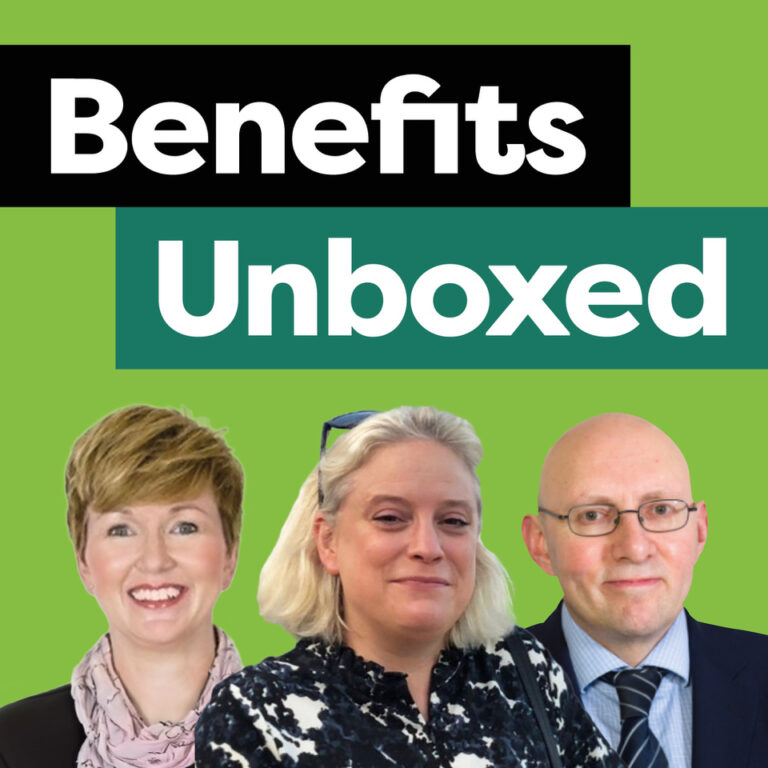For all the investment in employee benefits, too many staff remain in the dark about what’s really on offer and where they stand financially, both now and in the future. This is why benefits dashboards are fast becoming the essential bridge between disengagement and informed action.
The need for visibility has never been greater, especially when it comes to workplace pensions and the ever-growing issue of people having multiple pots. Terry Kemp, pensions and benefits expert at Aslan, points out that in the UK alone, there’s an estimated £32bn sitting in lost pensions. “For many, a pension is just something set up when they start a job, then forgotten about,” he says.
The forthcoming rollout of the government-supported pensions dashboards programme (PDP) aims to address the problem (more of which later), but for many organisations, dashboards are already playing a key role in day-to-day benefits communication and engagement.
Lay of the land
Benefits dashboards come in several forms, each with different roles and advantages.
Employer benefits dashboards are now a staple in many organisations. These online platforms act as a central hub for employees, offering visibility of benefits such as pensions, healthcare, mental health support and financial guidance.
Retirement savings dashboards are also widespread, particularly among large providers. But Adrian Firth, employee benefits consultant at Mattioli Woods, says they vary widely in sophistication.
“Basic dashboards may only have a pension contribution modelling tool or provide generic illustrations,” he explains, “but some employer retirement dashboards allow employees to model the potential income at retirement through retirement projections built into the system, so they can see the impact of changing their levels of contribution on their future income.”
Alongside these, the forthcoming government-supported pensions dashboards initiative will, once active, provide a single view of all pension funds, including the state pension. This new dashboard entrant offers employers both opportunities and obligations to shape how people access and understand their finances.
Driving engagement and supporting financial wellbeing
Jason Cannon, benefits consulting director at Gallagher, highlights the value of all types of dashboards in “ramping up engagement and communication, offering employees a clear view of all their rewards”.
David Weathers and Matt Thompson, board director and associate director respectively at Bartlett Group, note that employees often aren’t aware of the full range of benefits available to them. Dashboards help by offering a bespoke platform that “makes them feel secure and supported by their employers, which in turn leads to employee satisfaction and business security and success for the employers”, while allowing employers to communicate the true value of the total rewards package beyond basic salary.
Alex Hind, CEO of Heka, says that “visibility is crucial in all areas of a business and workforce”, particularly when it comes to financial benefits like pensions, financial coaching or budgeting tools. By making these accessible, dashboards empower employees to become more confident in their financial decision-making and can help address the significant issue of financial stress in the workplace.
A recurring theme from the experts is that dashboards need to be genuinely engaging. Kemp says: “When done right, a personalised benefits dashboard can be a powerful tool that helps people plan, save, and make better decisions about their money.” However, he adds that just having a dashboard doesn’t guarantee people will engage. “It needs to be paired with benefits that actually matter to employees right now, not just in 30 years time,” he insists.
Pension engagement, especially among the younger workforce, remains a challenge, and retirement savings dashboards can do a lot of heavy lifting. For years, simply getting hold of the right information was a struggle, with employees hunting for paperwork or multiple logins. Dashboards solve this by putting all relevant details in one place.
Chris Eastwood, founder and CEO of digital pension provider Penfold, says this level of visibility “makes pensions feel more real, more manageable, and more worth paying attention to.”
While provider dashboards have improved visibility and control, their scope is still limited to the pension arrangements of a single organisation or provider. But change is coming.
Pensions dashboards programme (PDP)
The rollout of the long-awaited PDP will mark a significant shift for UK workplace savings. Unlike individual employer or provider dashboards, which are already up and running in many organisations, the dashboards under the government’s initiative will be designed to offer every individual a consolidated view of all their pension savings. This includes multiple workplace pensions, personal pensions, public sector schemes and the state pension.
The development involves both public and commercial providers working within a single digital ecosystem. The PDP, which is part of the Money and Pensions Service (Maps), is designing and implementing the digital architecture. Maps, itself an arm’s-length body of the Department for Work and Pensions, is building its own non-commercial dashboard. In October 2024, the government said it will prioritise the roll out of the Maps dashboard.
Commercial providers can also develop their own compliant pensions dashboards, and many are. These will connect to the same digital ecosystem through the PDP, and the Financial Conduct Authority will authorise and regulate pensions dashboards operators.
Robert Cochran, pensions expert at Scottish Widows, believes the initiative could be transformative for engagement. He says the core questions every saver should be able to answer from the dashboard are: what have I got; is it enough; what can I do next?
He adds: “For the longest time it’s been tricky for people to answer that first question. But pension dashboards will make it easy. You’ll be able to see all your pensions no matter whether it’s state pension, public service pensions, final salary pensions or defined contribution pensions. This will make it easy for employees to understand where they are on their pension savings journey and of course help them track down all those lost pension pots.
“It’s going to spark a pension engagement revolution,” Cochran says.
While the government said in October 2024 that it was too early to confirm when dashboards will be available to the public, legislation requires all pension schemes and providers within scope to connect to the ecosystem by 31 October 2026.
This connection deadline is what’s driving much of the current preparation activity among employers and their pension providers.
Cochran advises: “Employers should check how their schemes are tracking, have they connected to the pension dashboard infrastructure and are they on track to do so?
“For most employers, this will all be taken care of by their scheme provider and most of the big scheme providers like Scottish Widows, Standard Life, Nest, have already connected. If an employer runs an own trust scheme with its own trustees, they should check with them.”
As Cochran notes, phase one will be a ‘view only’ approach. He says: “It will be good for employers to feedback the experience of their scheme members and whether ‘view only’ satisfies them or would they like to be able to transact through the dashboard as well?”
Simon Grover, director at Quietroom, urges employers to be proactive in their communication with staff and “start talking about dashboards now, not when they launch”.
He says: “Tell your employees that soon they’ll be able to see all their pensions in one secure place. Keep the benefits simple: dashboards help you find lost pensions and see clearly what you’ll have when you come to take your money out.”
Employers should prepare for a wave of employee questions, especially around security, access, and what information will be visible.
“We’d also suggest preparing for the questions you know are coming,” says Grover. “People will want to know about security, how to access the dashboards, and exactly what they’ll see. Get those answers ready now in the kind of language everyone can understand.
“And check your data is accurate, because nothing damages trust like employees finding errors in their pension information.” Grover also recommends asking suppliers for support. “You need materials that explain dashboards clearly, not technical jargon that confuses people,” he insists.
Employer opportunities
Benefits dashboards have already begun to change the way employees interact with their rewards, making complex packages visible, accessible and actionable. With PDP set to further boost transparency and engagement, employers have an important role to play in supporting staff to make the most of these tools.
Technology can be a gamechanger, but it’s not enough on its own. The true impact comes when clear, honest communication helps employees connect the numbers on the screen to informed decisions for their future.
That is when dashboards become more than just a pretty interface; they become the engine of better outcomes and more engaged, empowered employees.
Know your dashboards: what’s the difference?
Adrian Firth, employee benefits consultant at Mattioli Woods, explains
Employer’s personalised benefits dashboards:
- Help employees identify with the organisation they work for
- Enable employees to understand their total cost/worth to the business, especially where there are total reward statements
- Provide a well-structured package of benefits, offering ability to tailor these to requirements
- Can include contribution modelling, allowing employees to see how extra pay can boost retirement income
- Use projections to show how much an employee may receive in retirement
- May not be able to show the full picture in terms of other pensions from outside the organisation or include accurate state pension statement
Government-supported pensions dashboards programme:
- Link to a Statutory Money Purchase Illustration (SMPI) for defined contribution (DC) benefits and annual statement for defined benefit (DB) schemes
- For DC schemes: provide value of any uncrystallised (unused) pension funds and estimate of retirement income based on certain assumptions
- For DB schemes: provide annual statement with income and, if applicable, any lump sum figures, again based on certain assumptions
- Initially provide no planning or modelling of future income, though this is expected to evolve in time
- Include an accurate statement of state pension entitlement as per government records













